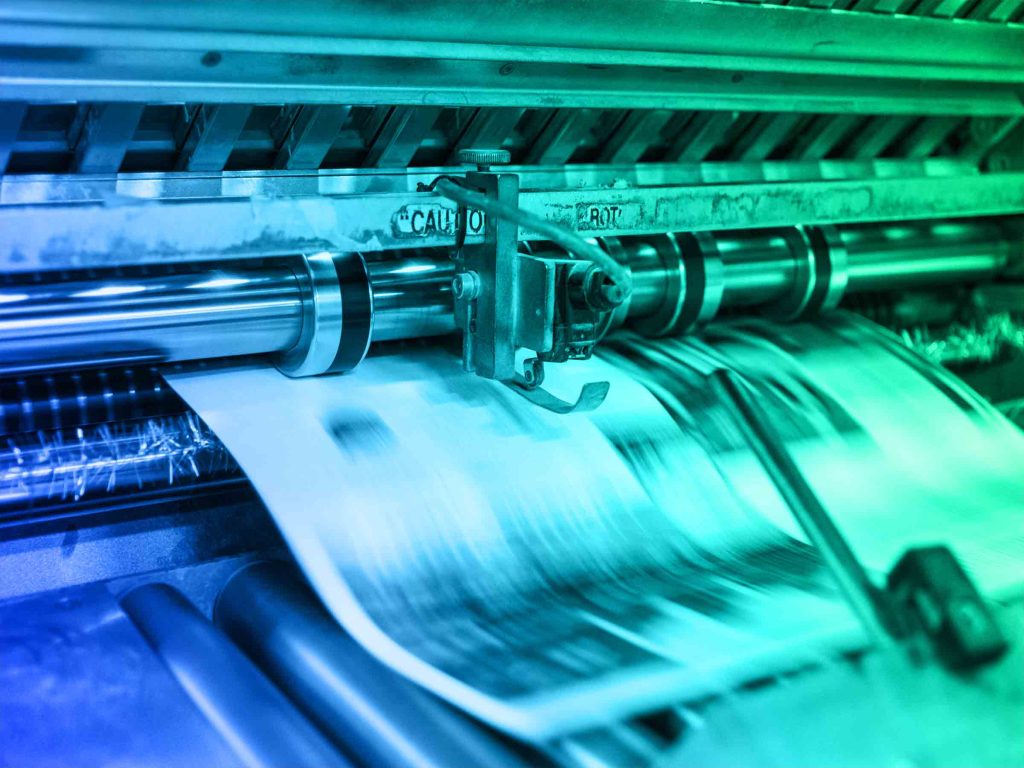Introduction
Offset printing is a widely used printing technique that has been around for over a century. It is a popular choice for producing high-quality prints in large quantities. If you are new to the world of printing, understanding the basics of offset printing can be beneficial. This blog post aims to provide a beginner-friendly overview of offset printing, its process, advantages, and applications.
What is Offset Printing?
Offset printing is a widely used printing technique that involves transferring an inked image from a plate to a rubber blanket, and then onto the printing surface. It is called “”offset”” because the ink is not directly applied to the paper. This method is commonly used for high-volume commercial printing, such as newspapers, magazines, brochures, and books.
How Does Offset Printing Work?
The offset printing process involves several steps:
1. Prepress
In the prepress stage, the design and layout of the printed material are prepared. This includes creating the artwork, adjusting colors, and setting up the layout for printing. The final design is then transferred to a metal plate.
2. Plate Making
The metal plate is made by exposing it to light through a film negative or computer-to-plate system. The areas exposed to light become hardened, while the non-image areas remain soft. The plate is then chemically treated to remove the soft areas, leaving behind the image to be printed.
3. Ink Application
The ink is applied to the plate using rollers. The ink adheres to the image areas on the plate, while the non-image areas repel the ink. This creates a reversed image on the plate, ready for transfer.
4. Offset Transfer
The inked image on the plate is transferred to a rubber blanket. The blanket is then pressed onto the paper or other printing surface, transferring the inked image. This indirect transfer method allows for consistent and high-quality printing.
5. Drying and Finishing
After the ink is transferred to the paper, it needs to dry. This can be done through natural drying or by using drying equipment. Once the ink is dry, the printed material goes through finishing processes such as cutting, folding, binding, or any other required post-printing operations.
Advantages of Offset Printing
Offset printing offers several advantages over other printing methods:
1. High-Quality Output
Offset printing produces sharp and clear images with consistent color.
Summary
Offset printing, also known as lithography, is a printing method that involves transferring ink from a plate to a rubber blanket, and then onto the printing surface. This indirect printing process allows for consistent and precise reproduction of images and text. Offset printing offers several advantages, such as cost-effectiveness for large print runs, excellent image quality, an d compatibility with a wide range of materials. It is commonly used for producing newspapers, magazines, brochures, packaging materials, and more.
Q: What is offset printing?
A: Offset printing is a commonly used printing technique where the inked image is transferred (or “offset”) from a plate to a rubber blanket, then onto the printing surface.
Q: How does offset printing work?
A: Offset printing works by using a series of rollers to transfer ink onto a printing plate. The image on the plate is then offset onto a rubber blanket, which in turn transfers the image onto the final printing surface.
Q: What are the advantages of offset printing?
A: Offset printing offers high image quality, sharpness, and detail. It is suitable for large print runs and supports a wide range of printing surfaces such as paper, cardboard, and plastic.
Q: What types of projects are suitable for offset printing?
A: Offset printing is ideal for projects that require high-quality and consistent results, such as brochures, magazines, books, catalogs, and business cards.
Q: What is the difference between offset printing and digital printing?
A: Offset printing involves the use of printing plates and is more suitable for large print runs, while digital printing allows for on-demand printing and is better suited for smaller quantities and variable data printing.

Welcome to my website! My name is David Banfield, and I am a professional Digital Printing Specialist with a passion for all things related to 3D Printing Services, Digital Printing Techniques, Offset Printing Insights, and Design Software Solutions. With years of experience in the industry, I am dedicated to providing valuable information and resources to help individuals and businesses make the most of their printing needs.


